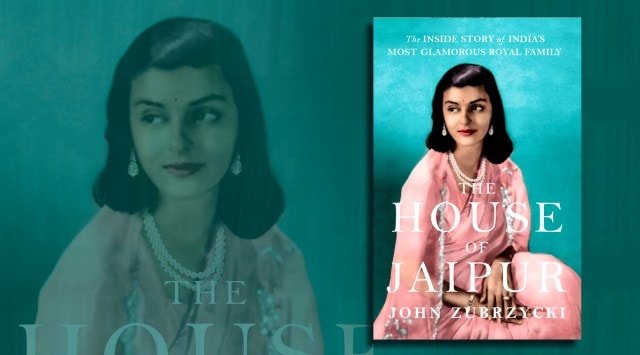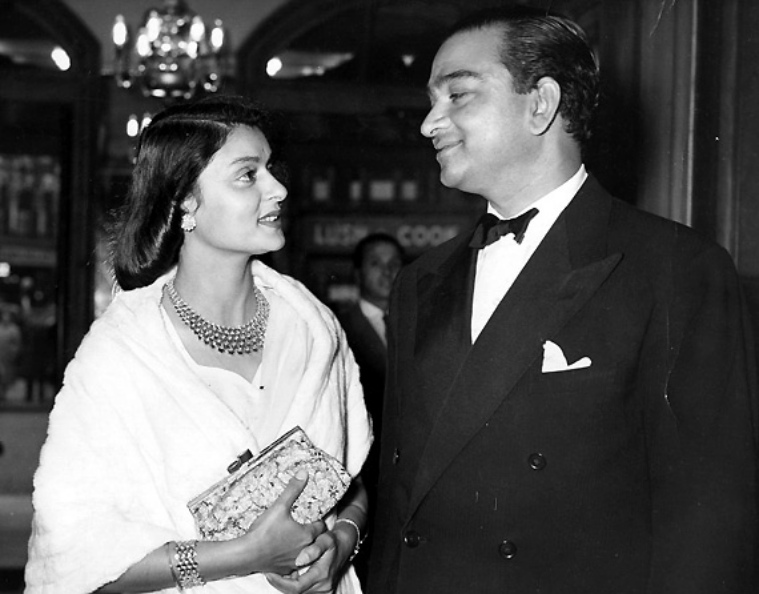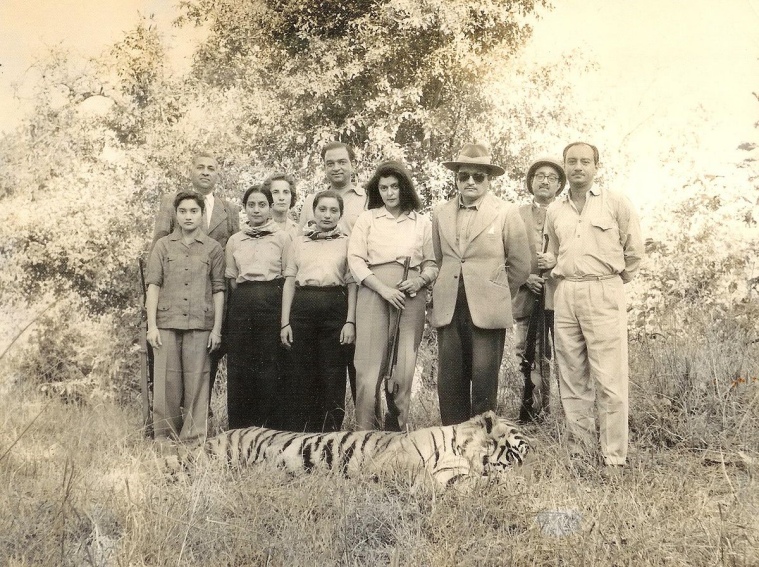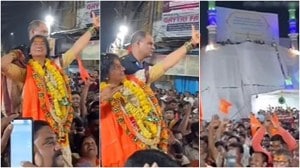- India
- International
New book says British did not want ‘non-Aryan’ Gayatri Devi to marry Raja of Jaipur
John Zubrzycki's book goes beyond the glitter and gold of the Jaipur royal household to dig out the obscure accounts of romantic jealousies, property feuds, fatal addictions, suppressed grief and more.
 The book narrates the history of the Jaipur house from the final days of the British Raj till now. (Source: Juggernaut)
The book narrates the history of the Jaipur house from the final days of the British Raj till now. (Source: Juggernaut)In the romanticised and exotic world of princely India, Jaipur has always held a special place. It was the first among the 500 odd princely states to have signed the instrument of accession to the Indian union. Despite being stripped of its royal privileges, Jaipur continues to stir the imaginations of the common man, with its stories of ravishing maharanis, philandering princes, opulent parties, polo matches and a lot more. At the center of Jaipur’s regal story was Gayatri Devi and Sawai Man Singh II, popularly called Ayesha and Jai. The couple’s stories of love, politics and power, are still spoken of with fascination.
But the story of Jaipur is more than that of wealth and beauty. Australian journalist and author, John Zubrzycki, in his new book, ‘The house of Jaipur: The Inside Story of India’s Most Glamorous Royal Family’, published by Juggernaut, goes beyond the facade of glitter and gold, to dig out the obscure accounts of romantic jealousies, property feuds and treacheries, fatal addictions, suppressed grief and a lot more. Zubrzycki narrates the history of the Jaipur house from the final days of the British Raj till now. His book is replete with exciting anecdotes from the inner quarters of the royal palace, as also lesser known historical facts about how the princely state was engaging with the British and an Independent Indian government.
 At the center of Jaipur’s regal story was Gayatri Devi and Sawai Man Singh II, popularly called Ayesha and Jai. (Source: Wikimedia Commons)
At the center of Jaipur’s regal story was Gayatri Devi and Sawai Man Singh II, popularly called Ayesha and Jai. (Source: Wikimedia Commons)
In an email interview with Indianexpress.com, Zubrzycki wrote about his experience of researching for the book, the sources that stood out for him, the underrated characters of the family, the adjustments the princely family had to make after acceding to India, and why Jaipur continues to fascinate the generation of today.
What were your sources for this book? Is there any conversation or piece of writing or record that stood out to you?
The information on the inner workings of the Jaipur palaces came mostly from archival sources in India and at the British Library and a particularly outstanding book of Jaipur under the Raj, ‘The Cat and the Lion’ by the Australian academic Robert Stern, which came out in the 1980s. The Delhi-based academic Manisha Choudhary, has also done some important work on the Jaipur zenana. And of course, I interviewed people who might have had some first-hand knowledge of the inner workings of the Jaipur palace, though how it functions now is vastly different from how it functioned pre-Independence.

You write that Gayatri Devi’s memoir did not give away much about the uncomfortable side of her marriage, for instance how the British were against the union. Why were the British against the marriage?
During the Raj, the British had the final say in matters of marriage and succession in the princely states. Marrying a non-Rajput princess from Cooch Behar would, the British believed, create unrest between Jaipur and other states in Rajputana. Somewhat puzzlingly the British described Gayatri as a ‘non-Aryan’ and the marriage would therefore deliver a ‘serious blow to Rajput pride of race’.
There were also reports that state funds were being diverted to build palatial accommodation for Gayatri. Finally, the British feared that the marriage would be an affront to the other two wives, particularly now that both of them had produced sons. Jai to his credit stood up to the then Viceroy Lord Linlithgow, essentially telling him to mind his own business.
What was the reaction of the Jaipur royal family to the Independence of India?
Jai was very pro-British and enjoyed a special rapport with Mountbatten. According to Mountbatten, Jai and Gayatri were under no illusion that princely India could continue after independence. Jaipur was among the first states to sign the Instrument of Accession handing the Dominion of India control of the state’s external affairs, defence and communications.
What kind of arrangements did the family make after acceding to join the Indian union, so as to keep their royal lineage relevant?
For starters Jaipur had to give up its statehood and was integrated into the new union of Greater Rajasthan. Jai had to give up cash, property and goods worth an estimated Rs 8 crore in return for a privy purse worth about Rs 18 lakh. The Government of India also acquired Jaipur’s railway infrastructure, all official buildings and many historical monuments such as Amber Fort and Jai Singh’s observatories in Jaipur and Delhi. Jai also had to give up his army which was merged with the Indian armed forces. In return he was made rajpramukh but this post was also taken away from him in 1956. Ultimately the Indian government also took away the privy purses and the entitlements that came with them.
 Col. Raj Singh with Maharaja Sawai Man Singh and Maharani Gayatri Devi of Jaipur (Source: Wikimedia Commons)
Col. Raj Singh with Maharaja Sawai Man Singh and Maharani Gayatri Devi of Jaipur (Source: Wikimedia Commons)
Gayatri Devi is the one character most spoken about in the house of Jaipur. Who in your opinion is the most underplayed character in the Jaipur palace?
The most underplayed characters are Gayatri’s older brother Jagaddipendra or Bhaiya as he was known, who became the Maharaja of Cooch Behar and Jagat, the only son of Jai and Gayatri. Both lived tragic lives, both were neglected by their mothers and died of alcohol-related illnesses.
The relationship between Bhaiya and Gayatri is particularly fascinating as they went from being very close to being quite estranged at the time of his death. She doesn’t even mention his wife by name in the memoir and treats his death perfunctorily. Jagat was also a misunderstood character. Like Bhaiya he had a domineering mother who took a hands off approach to his upbringing which alienated him from his roots and made him look for solace in alcohol which led to the breakup of his marriage with his Thai wife Priya.
It’s been over 70 years since the princely states became part of the Indian union. Yet, they continue to invoke a lot of interest both in India and abroad. Why would you say that is the case?
Jaipur is synonymous with princely India. It lies on the ‘Golden Triangle’ tourist route. For many visitors to India it is their first taste of how India’s royals lived. Amber is the quintessential Indian fort. The Rajputs have been romanticised in film and fiction, their heroic exploits are still a matter of pride. Their palaces have been turned into some of the world’s most luxurious hotels. By and large members of these princely families have successfully transitioned into business and politics. But there is often a whiff of controversy about them, particularly when it comes to fighting over the spoils of ancestral properties and inherited fortunes and this is particularly the case with the Jaipurs.
Apr 18: Latest News
- 01
- 02
- 03
- 04
- 05






































